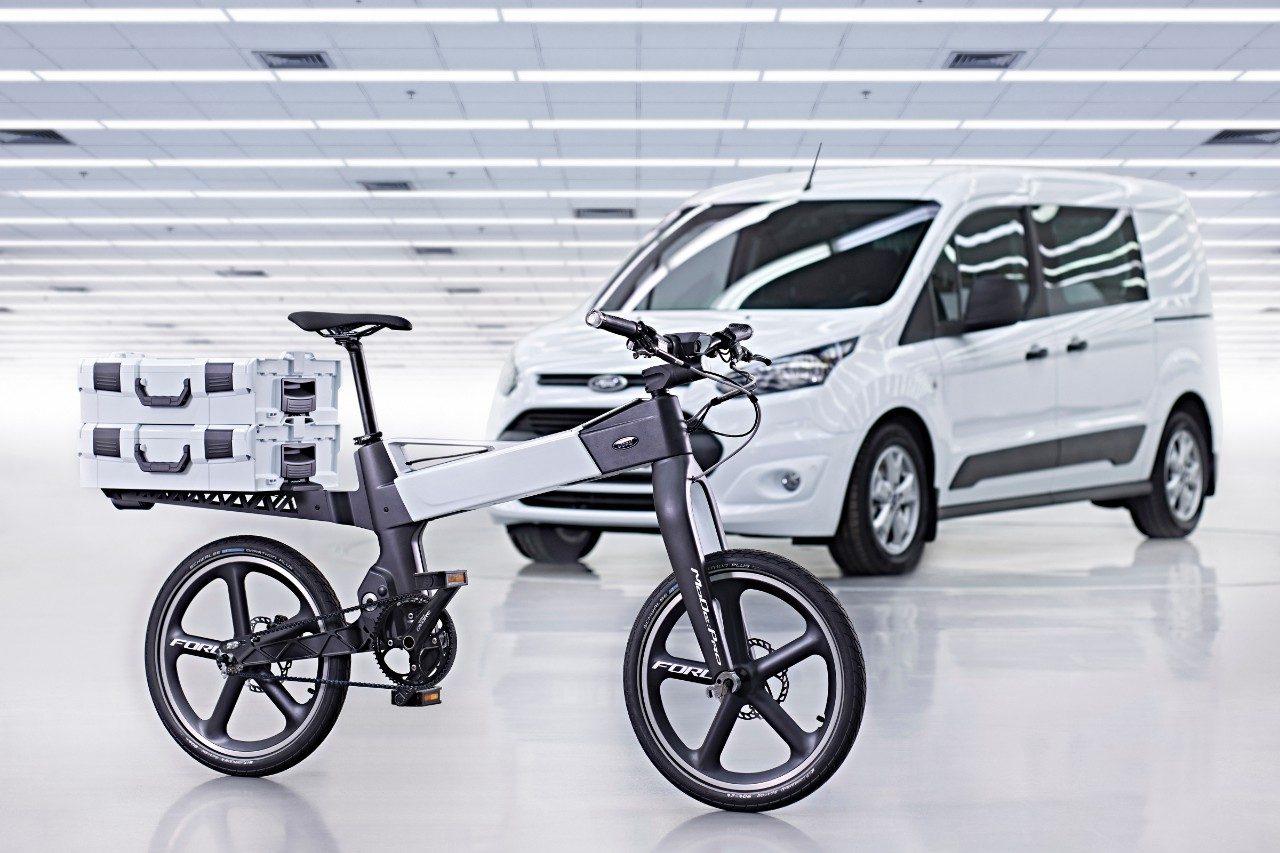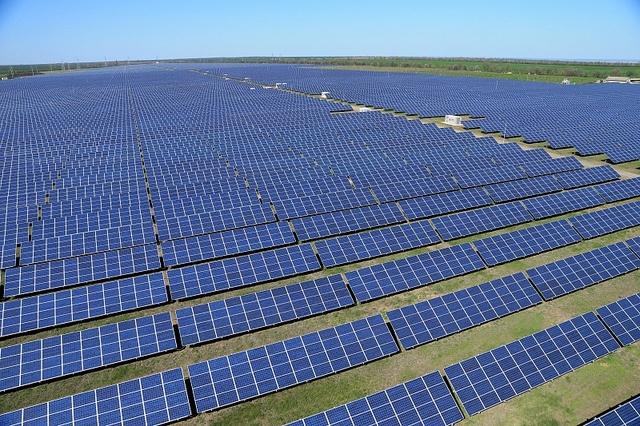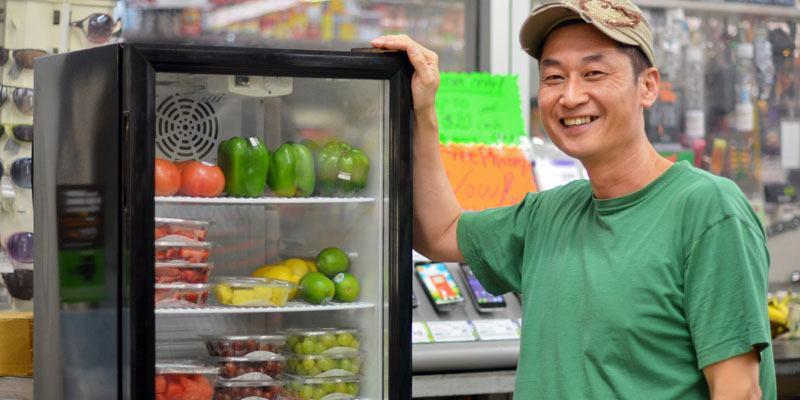Ford Announces E-Bikes for Urban Commutes


The 2015 Mobile World Congress, which kicked off yesterday, has already dropped a few bombshells. The impending breakup of Google+, Ikea's new wireless charging lamp displays and the (presumably) must-have facial recognition-blocking glasses from AVG are all the talk at the moment. Oh, and let's not forget Twitter's tiff with ISIS, which has threatened Twitter's employees for blocking its account.
But few gizmos seem as user-friendly as Ford's two e-bike prototypes, which are designed to almost read the minds of their riders. After years of testing, Ford on Monday unveiled the MoDe:Me and the MoDe:Pro, both of which are designed to work with the Apple iPhone6. The Me version is designed for the bike commuter, while the Pro is for couriers and others who use their bikes for work and need carrying capacity.
But the real highlight of the MoDe series is the bikes' adaptability to multi-source transport. Like the MUVe scooter in Israel, the e-bikes are designed to be foldable and to be usable for trips that require more than one mode of travel. A 9-hour battery allows for extended travel time between charging sessions. Its 200-amp motor allows for a pedal-free mode, which has a maximum speed of 25 miles per hour.
The bikes were announced as part of Ford's Handle on Mobility experiment, which the company said is part of a broader plan to "help change the way the world moves through innovation in connectivity, mobility, autonomous vehicles, customer experience and big data." Improved customer experience, flexible models that are more adaptable to shipping and "social collaboration" are all at the heart of this effort, Ford said.
"Changing the way we think, collaborate and behave is essential to ensuring freedom of movement of both people and economies,” said Barb Samardzich, who serves as the chief operating officer for Ford in Europe.
Both versions of the bike can be programmed meet the needs of route and type of travel. For example: Commuters in Bellevue, Washington, who travel regularly to downtown Seattle can program the bike to get it to the nearest bus by either the shortest or least grueling route. The handle bars vibrate when it is time to make a turn, and the bike can "sense" overtaking vehicles and alert the rider of risks.
Riders can also take a break with a 'no sweat' feature, which allows the bike to take over some of the pedaling according to heart rate.
These features are also designed to make commercial cycling easier by making biking and navigation in heavy traffic safer and less strenuous, said Ken Washington, vice president of Ford Research and Advanced Engineering.
“Being able to seamlessly move between cars, buses, trains and e-bikes and react to changing traffic situations can make a big difference both for commuters and for those delivering goods, services and healthcare,” Washington said.
Ford also unveiled its open-source InfoCycle sensor package, which sits on the handle bars and is designed to gather data about how bikes are used in urban settings.
"The project has been designed to enhance understanding of the biking ecosystem and to improve safety for cyclists, as well as exploring improved mapping, smart journey planning and community-based services," said the company. The sensor gathers information about user experiences such as speed and acceleration, climate, light, and altitude.
Ford hasn't said if or when the bikes would be released to the general market. So far, its two prototypes have benefited from employee input, as well as the expertise of bike manufacturer Dahon, known for its folding bikes.
The company's next step, it seems, is to gauge the reaction of its potential consumer base. Given the prominence of cycling in European countries like Sweden, France and Denmark, it's pretty likely that smart bikes will be a big hit in the EU. Whether we're ready for such a concept here is probably something Ford is still trying to figure out.
Images: Ford Motor Co.
New Partnership Promises Biodegradable Microbeads


Microbeads were one of the great recent innovations in the personal care industry. We were told that they were fantastic for dental health and exfoliation (no manky loofahs stinking up the shower). They also inspired beauty tips backed up by brilliant marketing but not necessarily science.
Then the science started to kick in, and it was not pretty: Those microbeads, often less than 1 millimeter in size, were not necessarily filtered out by wastewater facilities. Instead, they ended up in streams, rivers, lakes and oceans. Along the way, they have a knack for picking up pesticides and other toxins, and then becoming eaten by small creatures. If those tiny creatures did not starve to death because their digestive systems were clogged with plastic, then they were eaten by bigger creatures, then even larger creatures and then, eventually, humans, who thought they only ordered fish for dinner but had a good chance of also ingesting a small dose of microbeads.
The problem with microbeads reached a point where Illinois banned them from personal care products last year after research suggested the Great Lakes were rife with this plastic pollution. California and New York have passed similar bans, and similar legislation is underway in Ohio, Michigan and New Jersey. But a partnership between the bioplastics firm Metabolix and Honeywell, announced yesterday, could find a solution to the pesky microbead dilemma that in turn could benefit consumers, companies and the environment.
In a phone interview, Max Senechal, vice president of strategy and commercial development for Metabolix, explained how these microbeads are different.
The key is that the microbeads that Metabolix will provide Asensa, the personal care additives division of Honeywell, are made out of polyhydroxyalkanoate (PHA) biopolymers. Unlike conventionally produced microbeads, which have a base of polyethylene (PE), polypropylene (PP), polyethylene terephthalate (PET), polymethyl methacrylate (PMMA) or nylon (the chemical make up of these materials alone should have raised a few eyebrows here and there), this PHA-based option is biodegradable. Why?
PHAs are generally derived from lipids or fats. In the case of Metabolix’s product, corn dextrose is the feedstock the company is using for now. “It’s essentially a fermented product, a polyester made from fermentation, which can then be turned into a polymer,” Senechal said when I asked how this product was different from others on the market. “But PHAs have a similar composition to cellulose or paper.” Hence their ability to break down exponentially quicker than plastic microbeads.
According to at least one study, these microbeads can biodegrade 80 percent within 14 to 18 days in water and in soil. They attract bacteria that see them as a source of food, hastening the biodegrading process. The microbeads are also compostable and do not release toxic substances once they enter a marine environment.
Whether these PHA-based microbeads will truly be a viable alternative remains to be seen — after all, it took years until the environmental effects of conventional microbeads were understood. Indeed, some environmental watchdogs are going to fret over the 20 percent that does not biodegrade in two or three weeks. But Metabolix and Honeywell could score themselves a booming business as more states act to ban the use of conventional plastic-based microbeads while companies scramble to find a substitute for a tiny ingredient that turned into a big problem.
Image credit: Metabolix
Based in Fresno, California, Leon Kaye is a business writer and strategic communications specialist. He has also been featured in The Guardian, Clean Technica, Sustainable Brands, Earth911, Inhabitat, Architect Magazine and Wired.com. When he has time, he shares his thoughts on his own site, GreenGoPost.com. Follow him on Twitter and Instagram.
Three Megatrends That Suggest the ‘Time is Now’ for Clean Tech


By Jeremy Leggett
For the last 25 years, I have fought hard against defenders of finite carbon fuels, careless of the impact they have on our world by clinging to coal, oil and gas. And I have lost battle after battle against the dark side. But in 2013, something changed and the tide began to turn. Now, as we build up to the Paris climate talks in December, an event described by many observers as something of a ‘last chance saloon,' I’m genuinely hopeful the light side can win the war.
The world has witnessed an extraordinary series of events that have combined to develop a ‘tipping point’ in the decline of fossil fuel industries, driven by three emerging mega-trends.
First, the cost of deploying renewable energy systems is generally falling. In fact, 2013 saw new renewable energy generation overtake conventional fossil fuel and nuclear installations globally. According to UBS, a combination of a solar roof, an electric car and a domestic battery tank will offer a 7 percent return on investment every year -- with a six- to eight-year capital payback, without subsidy support -- by 2020. It’s no wonder tech-giant Apple has announced plans to jump into the mass-production of electric cars, complementing its already impressive adoption of solar energy.
Secondly, the cost of delivering hydrocarbons is rising. Drilling for shale is losing its appeal, with U.S. shale companies going bankrupt, drillers losing money and assets being written off by the billions. Meanwhile, last year saw peak capital expenditures (capex) spending by the oil and gas industry, and the lowest rate of discovery of new reserves in 20 years.
The situation is compounded by the Bank of England investigating whether or not fossil-fuel industries pose a threat to the stability of the capital markets. September 2014 saw the heirs to the Rockefeller oil fortune, who control around $860 million in assets, withdraw their funds from fossil fuel investments. The decision came as part of a wider divestment movement involving 800 global investors promising to remove $50 billion worth of support over the next five years.
Thirdly, the politics of climate abatement are showing signs of aligning. More than 100 countries now have a 2050 target to reach zero net greenhouse gas emissions. So have the likes of Virgin and Unilever. In the U.K., all three main political parties agree that a strong treaty is required in Paris, with the prime minister, deputy prime minister and opposition leader co-signing a letter of intention.
Meanwhile, the deal struck between the U.S. and China in Beijing, in November, is huge. China has for the first time committed to cap its carbon output by 2030 while generating at least 20 percent of its energy needs using clean energy sources, such as solar and wind. And with President Barack Obama agreeing to double the pace of the cuts in U.S. emissions, reducing them to between 26 and 28 percent below 2005 levels by 2025, the future looks bright. Even political parties are aligning in the U.S., with most Republicans claiming to favor a candidate that possesses strong climate policies.
I explore these three mega-trends in my latest book, ‘The Winning of the Carbon War," which will be published in a serial format between now and December, spanning what I fancy may prove to be the turnaround phase in the global energy-and-climate drama. I’m hoping it will be a useful monthly read for busy people without the time I am fortunate enough to have in watching the action unfold on the front lines.
For big energy, costs are soaring, investors are becoming increasingly dissatisfied, the clean-energy competitors are finding it easier to grow thanks to plunging costs, and analysts are more bullish about the need and potential for a low-carbon future to be realized. There’s also a clear shift in direction by policymakers, and society is refusing to continue to accept the activities of fossil fuel industries.
Any one of these challenges would be bad enough to confront on their own. Facing them all at once is going to be tough and could trigger the long-delayed managed retreat of the industry to clean energy alternatives.
Of course, governments may fail to codify their intentions in international law in Paris. But it is clear that the carbon war can now be won, and I am very excited to witness how things play out in the next 10 crucial months.
‘The Winning of the Carbon War’ will be downloadable for free and released in a ten-part series month by month through to the last day of the Paris climate summit in December 2015. Follow the blog and download the book www.jeremyleggett.net/latestbook.
The Renewable Energy Juggernaut Gains Momentum


Editor's Note: This post originally appeared on the Institute for Energy Economics and Financial Analysis (IEEFA) blog.
By Tim Buckley
Powerful evidence continues to emerge on the global energy economy’s transition to renewables.
Witness this week the release of a new study by the Fraunhofer Institute for Solar Energy Systems, a think tank based in Freiberg, Germany, that sees solar energy on track in many countries to become cheaper than coal- or natural-gas fired electricity by 2025.
These aren’t just developing countries Fraunhofer is talking about, although developing economies are huge players in this unfolding change.
A few telling excerpts from the report:
- By 2025, the solar-power production costs in central and southern Europe will have dropped to 4 to 6 cents per kilowatt-hour, and to as low as 2 to 4 cents by 2050.
- In Dubai, a long-term solar power-purchase contract was signed recently for 5 cents per kilowatt-hour.
- In Germany, large solar plants already deliver power for less than 9 cents per kilowatt-hour, while electricity from new fossil fuel plants costs 5 to 10 cents per kilowatt-hour. That cost reaches as much as 11 cents per kilowatt-hour from nuclear-powered plants.
The Fraunhofer report, commissioned by Agora Energiewende, a German energy research group, adds to work we’ve done recently here at IEEFA, where we see solar playing a critical role in energy markets in the short, medium and long term.
As we noted earlier this year in a report titled Global Energy Markets in Transition, 2014 was a step-change year in which the renewable-energy industry became a global juggernaut. The rate of change around the cost of renewable generation and innovation is astounding but certainly not unexpected. Efficiency improvements, greater economies of scale, and learning by doing will continue to drive the price of solar power generation to new lows.
The boom in renewables is being driven as well by their deflationary nature, which mimics the transition that drove adoption of cell phones, computers and the Internet. Plummeting costs and new technology will dramatically push down the installed cost of solar energy. The impact of this on the electricity market cannot be overstated.
The trend is clear, and the Fraunhofer study shows it in detail. Researchers found, for example, that installations of solar capacity last year rose by more than 20 percent to a record 46 to 48 gigawatts — enough energy to power 16 million homes. New global wind installations grew by 40 percent to 46 gigawatts, led by China and the U.S.
With the notable exception of Australia, where policy uncertainty has served as an effective hand-brake, the trend is the same around the world — in China, India, Europe, Japan, South Africa, Brazil and the U.S.
Importantly, the Fraunhofer study highlights how financial and regulatory policy are crucial to the renewable energy sector. There’s a trend here, too, as seen in signals out of key markets that include India, China and Brazil. Leaders of these huge emerging economies have grasped the role policy can play and are working to deliver new frameworks.
Solar energy, in particular, has a couple of other factors in its favor:
- As the Fraunhofer notes, as solar-module efficiencies double over the next two decades, the number of panels required per unit of electricity will halve -- thereby halving installation costs, regardless of any other economies of scale or technological gains.
- Government bond interest rates are still near historic lows — between 2 and 3 percent per year in both Europe and the U.S. These low rates have drastically lowered the cost of servicing the higher upfront capital costs of solar. This is a key improvement in cost per unit of electricity relative to thermal plants.
The effects of renewable growth are currently felt most keenly in the global coal sector, particularly in the structural decline of seaborne thermal coal. IEEFA anticipates that this trend will hasten, rather than abate, into 2016.
Image credit: Flickr/Activ Solar
Tim Buckley is IEEFA’s director of energy finance studies, Australasia.
Healthy Corners Program Tackles Urban Food Deserts


In large cities across the world, from Seoul to Stockholm, the corner market is a fact of life. Prepared foods, staples, beer for that last-minute party and, yes, fresh produce are the norm. In Europe and Latin America, fresh food is everywhere, on corners and in stores crammed between apartment buildings, offering seasonal produce that is easy to pick up on the way home from work. But in the U.S., the bodegas in New York and corner markets in other cities often have a nefarious reputation for carrying overpriced, unhealthy and processed foods.
In Washington, D.C., however, a new initiative is helping these corner stores stock fresh fruits and vegetables. Its long-term success may prove that 'food deserts' -- or areas lacking grocery stores -- really do benefit when more healthful options are available to residents. It may also determine if our emphasis on fresh and even organic food as a tool to solve poverty and public health problems is just another health fad backed up by little than high doses of pseudoscience.
D.C. Central Kitchen is a nonprofit social enterprise that runs a bevy of programs, including training unemployed adults for food service careers, delivering unwanted food to those who need it, serving healthier school meals and now, distributing fresh produce to small corner stores that can try selling it at a profit with almost no financial risk.
The Healthy Corners Initiative is a forehead-slapping program that comes across as common sense. Many corners stores in America’s inner cities, after all, do not sell fresh food for two main reasons. First, they have their bills to pay like the rest of us, and therefore the second factor: Selling fresh produce for the little guys is a money-losing proposition. Small market owners cannot buy at wholesale rates the way supermarket and big-box stores can. Instead, they often buy produce from a warehouse store such as Costco, mark it up and then watch the produce spoil on their shelves. Fresh produce also needs refrigeration, which adds more costs to a business already running on thin margins.
D.C. Central Kitchen, or DCCK, tackles those challenges by selling produce to corner stores at wholesale prices, but in smaller quantities. DCCK provides the store with a refrigerator for free if necessary, and replaces any produce that goes bad without charge. Trucks within DCCK’s fleet that are already picking up and delivering goods now incorporate these stores, which have to be at least a quarter-mile from a supermarket, into their routes. According to the nonprofit, it now services 67 stores, which have culled another US$49,000 in earnings and have sold 88,000 units of fresh produce and snacks.
DCCK is making a noble effort, and it is impressive as social enterprises go — 60 percent of the organization’s funds comes from revenue it generates from programs such as Healthy Corners. But as a recent overview in The Atlantic discussed, not all residents are necessarily buying into the program. Which leads to the question: Are food deserts the festering public health and social problem that we have come to believe them to be?
A decade ago, the U.K. retailer Tesco scored plenty of press attention for opening Fresh & Easy stores across California, Nevada and Arizona — mostly in neighborhoods considered food deserts in cities such as Las Vegas, Phoenix, San Francisco, Los Angeles and Fresno. Despite competitive prices, the chain failed spectacularly for a bevy of reasons: At first it did not participate in the SNAP program (food stamps), carried products locals did not want, or lacked ethnic foods that met local tastes (prepared Indian curries and harissa paste are not for everyone). Of course, the irritating self-checkout and the fact that many of its food products were not always fresh or easy contributed to the chain’s demise. Maybe another retailer will figure out how these neighborhoods can support a supermarket -- which, fair or not, is the norm for grocery shopping in the U.S.
But ripe for discussion is whether living in a food desert is as bad for public health as we are led to believe. Studies are emerging that question the link between easy access to grocery stores and healthful eating. Additional research has questioned the ties to grocery store access and childhood obesity. And while we have been ingrained to believe fresh produce is the most healthful option, there is also plenty of evidence to suggest that frozen and canned fruits and vegetables (horrors!) are not such a bad option for a variety of nutritional and ecological reasons. Before fresh food was just a flight from Chile or South Africa away, consumers ate canned vegetables almost year-round without the obesity problems with which we currently struggle. One’s eating habits and preferences may not always be the problem, despite the preaching of those of us who insist fresh kale and chard are the way to go.
Could it be that while we try to solve the food desert challenge, the real problem may be the stress and ordeal of poverty in and of itself, as a Slate article last year suggested? But addressing that problem opens a can containing new and troubling questions, many of which make us as a society uncomfortable.
Image credit: D.C. Central Kitchen
Based in Fresno, California, Leon Kaye is a business writer and strategic communications specialist. He has also been featured in The Guardian, Clean Technica, Sustainable Brands, Earth911, Inhabitat, Architect Magazine and Wired.com. When he has time, he shares his thoughts on his own site, GreenGoPost.com. Follow him on Twitter and Instagram.
Heineken Lager Brand Zaps 'Skeeters, Fights Malaria


Science has made great strides in the battle against malaria in recent years. Increased funding for research and public education have helped to beat back the spread of the disease, which is found on every continent on the planet. Still, as healthcare workers in countries like Papua New Guinea can attest, we're a long way from eradicating the disease.
More than 3 billion people across the world are at risk from the parasite, which thrives in moist, tropical and sub-tropical climates and is transmitted by the lowly mosquito. In Papua New Guinea, one of the common means of transmission is through mosquito bites at night. Improved mosquito netting and indoor pesticide sprays help to combat the disease indoors. But for those who enjoy sitting outside around the fire at the end of the day, say, sipping on a brew -- a common favorite pastime in the Oceanian nation -- staying protected from the pesky insect is still a challenge.
So, the makers of the popular SP Lager, an offshoot of the Heineken label, came up with a low-cost option to ward off the 'skeeters: the Mozzie Box.
Market researchers at the Melbourne, Australia-based company GPY&R determined that many of the company's customers enjoyed their beer in the evening hours around the bonfire and used old boxes as fuel to keep it going. By spraying the beer boxes with eucalyptus, one of the world's oldest forms of mosquito pesticide, the beer manufacturers are able to provide a low-cost means for introducing a mosquito deterrent -- while still providing access to one of the country's most popular beers.
Of course, scientists have already confirmed that it's not the warm, crackling fire that attracts the mosquitoes, but the warm-blooded target -- and the beer. Researchers have been able to dispel the age-old rumor that beer wards off 'skeeters. It actually attracts them, increasing the likelihood of exposure to malaria.
And changing those social habits aren't so easy, either.
"[Knowledge] of human behavior is essential in the planning of disease control programs," writes John M. Goldsmid, an emeritus professor in microbiology at the University of Tasmania in Hobart, Australia. Sociological efforts to change people's exposure to diseases don't always work if ingrained customs aren't taken into consideration. Papua New Guinea residents may not be inclined to stop their preferred tradition of drinking beer around the bonfire, especially if it serves as a social release at the end of a grueling day of work.
There's no assurance that the drinker won't contract malaria while sitting around the eucalyptus-perfumed fire, either. The developers at GPY&R point out that the spray is not a guaranteed protection from mosquito bites. It simply adds a repellent that has been shown to work in natural settings. But it is one more ingenious way of using technology and natural resources to work around the challenges posed by human lifestyle.
http://youtu.be/2HbA-jdJKxI
Images of Mozzie Box: GPY&R
Image of mosquito: James Jordan
Solar Crowdfunding Startup Offers Attractive Returns


Crowdfunding provides the means for innovative startups to raise capital. That includes the solar industry, where grassroots-based startups, such as Mosaic, enable Americans to invest in projects that install solar photovoltaic (PV) systems on U.S. homes, schools, businesses and municipal buildings.
Joining their ranks, San Francisco nonprofit RE-volv on Feb. 24 announced it raised over $50,000 for its Solar Seed Fund through its crowdfunding platform. Its third such crowdfunding campaign, RE-volv will use the money to finance installation of a 36-kilowatt solar PV array for the Other Avenues Food Cooperative in San Francisco.
Community-driven solar crowdfunding platforms are creating green jobs, stimulating local economies, and improving local and state government finances. They're also helping assure a better environment for this and future generations by taking action to reduce the risks and costs of climate change, RE-volv Executive Director Andreas Karelas highlighted.
"People-funded renewable energy"
RE-volv describes itself as a “people-funded renewable energy” nonprofit organization. In a press release announcing its latest successful Solar Seed Fund crowdfunding campaign, RE-volv Executive Director Karelas stated:
“People are sick of waiting for leaders to take action on climate change. They want to lead the way in their own communities and RE-volv is giving them a tool to do that. Having completed three successful campaigns, we see that this model is replicable and poised to grow rapidly.”
A community-driven revolving solar seed fund
Raising capital for nonprofits and cooperatives exclusively, RE-volv has raised over $121,000 spread across nearly 900 donations in 38 states and 22 countries over the course of its first three Indiegogo crowdfunding campaigns. That investment capital is being used to finance a total 68 kilowatts of community-based solar PV projects.
By raising tax-deductible donations, RE-volv covers the initial costs of a 20-year solar lease. Communities repay RE-volv over time via another lease agreement. Those returns, plus interest, are re-invested by RE-volv in new projects, in effect creating a revolving fund for financing community-based solar energy projects by nonprofits and cooperatives.
Darryl Dea, president of Other Avenues Food Cooperative in San Francisco, commented on the critical role the capital provided by RE-volv played in its efforts to install a solar PV system:
“I’ve been working on this project for eight years, and it’s been difficult to find the right fit for financing this solar project. So when RE-volv came around it was a perfect fit for us because not only do they work with nonprofits and co-ops, but we’re able to contribute to this fund which will further create more solar projects.”
The growing ranks of organizations joining the fossil fuel divestment movement would be well-served by allocating at least some of the resulting capital into community-based solar and renewable energy projects, seed funds, and crowdfunding campaigns, famed environmentalist, author and 350.org founder Bill McKibben wrote in the run-up to Global Divestment Day last week.
*Image credits: 1), 2) RE-volv; 3) Global Divestment Day
Energy Efficiency Solutions for Retail Chains


By Yaniv Vardi
Twenty billion dollars.
That is a lot of money. $20 billion is roughly the Gross Domestic Product of Nepal. It's also rumored to be the annual budget of the NSA. $20 billion also happens to be the value of energy used each year by the retail industry in the U.S. According to Adam Siegel of the Retail Industry Leaders Association, this creates a savings potential in the industry of roughly $3 billion (more than the GDP of Aruba).
At the macro level, a $3 billion industry-wide opportunity for savings (not to mention the potential environmental improvements) is a big deal. Even at the micro level, when we examine individual retail chains, we discover that excess energy consumption in retail can exceed 30 percent of total profits. With solutions that promote energy and operational efficiencies, we can do away with the waste and inject the savings directly to the bottom line.
Forward-thinking retail chains are accepting energy as a strategic asset. And, as such, they are finding ways to manage their energy consumption intelligently to minimize off-hour consumption and wrong building automation system (BAS) scheduling, antiquated technology solutions, poor maintenance and inefficient equipment, and eliminate undetected and resource-intensive failures.
Solutions must be based on visibility, analytics and processes
To combat the energy-wasters within operations, retailers must attain visibility into their energy consumption. Often, we find retail chains that rely only on data provided by the utility company about total energy spend. To optimize performance, we must first uncover information about how each of our systems and devices utilize energy. Only with this level of visibility can we start to understand the core of the problem and work toward a solution.
Retailers must also have access to an advanced analytics system that can aggregate all of the granular device-level energy data. Based on this information, analytics can reveal usage patterns and trends, benchmark sites and identify maintenance issues before failures occur.
Powered by data and insights, retailers can then create processes that leverage this intelligence to reduce consumption across the retail chain (and increase corporate profits).
Device-level data enables ecosystem solutions
For energy efficiency solutions to have a long-term, positive effect on a retailer’s bottom line, they must solve challenges of scale for the entire energy ecosystem. However, to gain the visibility necessary to understand the problems of the entire ecosystem, we must track, monitor and analyze each of its components.
By using wireless sensor technology, we can observe the power consumption per device, per location, per unit of time. With this level of granularity, we can, for example, detect lighting systems or LCD screens which operate after hours, when the store is closed. Retailers that operate a building automation system can be alerted to overrides or poor scheduling of the system.
We can improve operational efficiency of our companies by shifting to predictive maintenance of our systems. That is, instead of investing resources in randomly scheduled maintenance, we can monitor energy usage at the device level and base our maintenance on data that points to an anomaly such as overconsumption, idling or under-consumption. When we optimize our maintenance schedules based on this information, we increase equipment life, decrease maintenance costs and eliminate equipment failures.
Our device-level data can also alert us to equipment that is functioning inefficiently. By benchmarking and comparing similar systems and locations, we can easily identify those which are underperforming, as well as track the effects of any maintenance or retrofitting projects.
Socially responsible retailers
Retail chains of all sizes are realizing the benefits of energy efficiency on their power and light (P&L) systems: By reducing energy consumption, energy efficiency upgrades simply increase profits. But for today’s retailers, energy efficiency is not just a financial goal. Programs and incentives like ISO 50001 also incentivize responsible retailers. And corporate social responsibility programs that include sustainability, energy efficiency and operational efficiency improvements foster brand loyalty and goodwill -- and prepare our facilities for the future.
Energy efficient retail chains
The $3 billion savings potential for the retail sector is incentive enough for retail chains to start seriously thinking about -- and enacting -- energy efficiency solutions.
But the payoffs go even further than the $3 billion. With solutions that are based on visibility, analytics and processes, retailers are now tracking their energy consumption at the device level, analyzing it and using the insights to understand ecosystem-level solutions -- eliminating waste and benefiting financially, environmentally and socially.
Image credit: Flickr/Random Retail
Yaniv Vardi, Chief Executive Officer at Panoramic Power. Yaniv is a seasoned executive with close to two decades of executive leadership experience in the Enterprise Solution Industry. As CEO of Panoramic Power, he oversees the day-to-day operations of the company as well as provides vision, strategic direction and focused execution for the company.
Jaguar Land Rover sees workforce volunteering rate jump 36%


Workforce volunteering has leapt 36% at automotive giant Jaguar Land Rover with more than 9,600 employees donating over 115,000 hours (or 14,400 working days) to support their local communities.
This record-breaking performance is an increase of 36% on employee participation and 45% in time donated compared to 2013, which saw 5,860 employees donate 63,400 hours
Around 85% of volunteers supported Jaguar Land Rover’s ‘Inspiring Tomorrow’s Engineers’ programme, which engaged 300,000 young people in the UK last year. Employees support Education Business Partnership Centres which run school visits and work placements at the company’s sites by helping develop curriculum materials, delivering presentations to groups, supporting external careers events or mentoring young people on work experience placements.
Jonathan Garrett, CSR director, Jaguar Land Rover, commented: "Employee volunteering plays a pivotal role in our Community Relations strategy and we are delighted that so many of our employees donated their skills and time to benefit others.
"As well as making a positive impact on young people's aspirations and attainment, our education activities also promote advanced manufacturing careers at Jaguar Land Rover and our supply chain as well as acting as a pipeline for young talent, which is essential for the business to achieve its ambitious global growth plans."
Jaguar Land Rover releases employees from the workplace for up to two days per year to support projects focussing on regeneration, education, young people, charity work and the environment. Projects are identified through a volunteering challenge database or are nominated by employees.
Ford drives sustainable fashion with recycled couture collection


Car seat covers used in new Ford cars have received a glamorous new lease of life after being recycled for a unique fashion collection.
Emerging designers from Europe and Asia transformed the covers – and other materials and waste from Ford vehicle production – into dresses, jackets and skirts for The Redress Forum: Ford Design Challenge. Held during Hong Kong Fashion Week, the event was organised with sustainable fashion charity Redress to highlight sustainable design in fashion and automotive.
“Sustainability is a key element of Ford design and it is tremendously exciting to see material from our cars given a new lease of life on the catwalk,” said Emily Lai, manager, Colour and Materials Design, Ford Asia Pacific. “Designers have the power to affect environmental waste through their designs and the design process, and can minimise this total impact through the creative use of materials and other innovations. All the creations we have seen are innovative and thought-provoking, and we applaud each participant for rising to the challenge.”
Taking part were the 10 finalists of the Ford-sponsored 2014/15 EcoChic Design Award, including rising talents from Denmark, France, Sweden and the United Kingdom. Amandah Andersson, from Sweden, used felt and cloth from Mondeo and Kuga seats to help create the winning ensemble in just three hours.
“Waste-to-landfill is a big issue our planet faces and we at Redress work to raise awareness about how we can reduce this,” said Christina Dean, founder and ceo, Redress. “The Redress Forum: Ford Design Challenge was a great demonstration of how sustainable design thinking is as relevant for fashion as it is for the automotive industry.”
Since 2001, a dedicated team of Ford engineers has worked to incorporate sustainable materials into Ford vehicles, while upholding the company’s strict quality and performance standards. Today, the company uses recycled plastic bottles, shredded cotton, kenaf, wheat straw, soy beans and castor oil to help reduce consumer and industrial waste, decrease depletion of natural resources and lower energy consumption.
The all-new Mondeo and Kuga use a mixture of 50% kenaf and 50% plastic in interior door panels, reducing individual component weight by more than 30%.